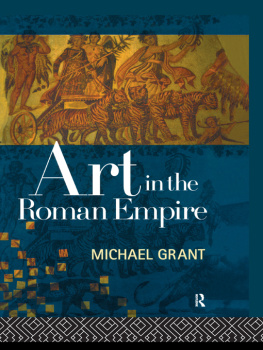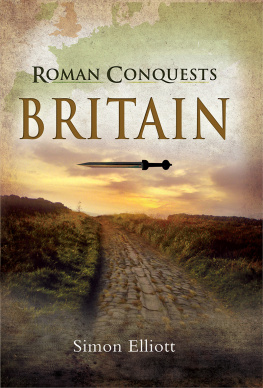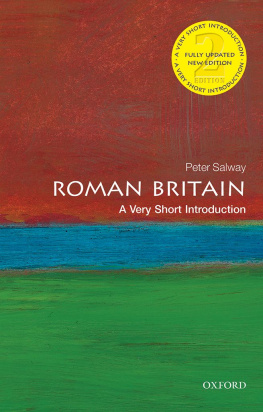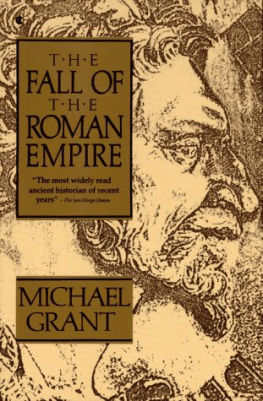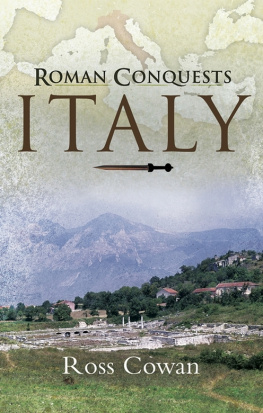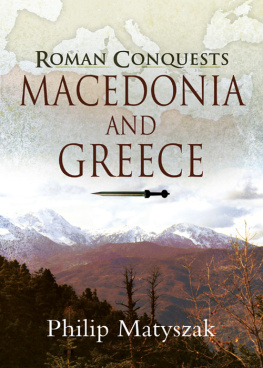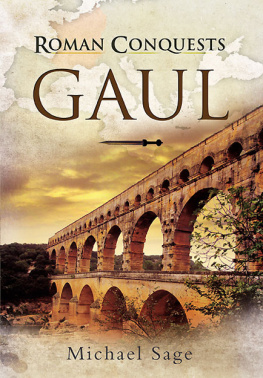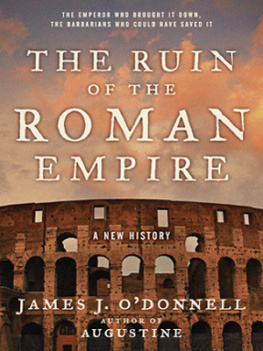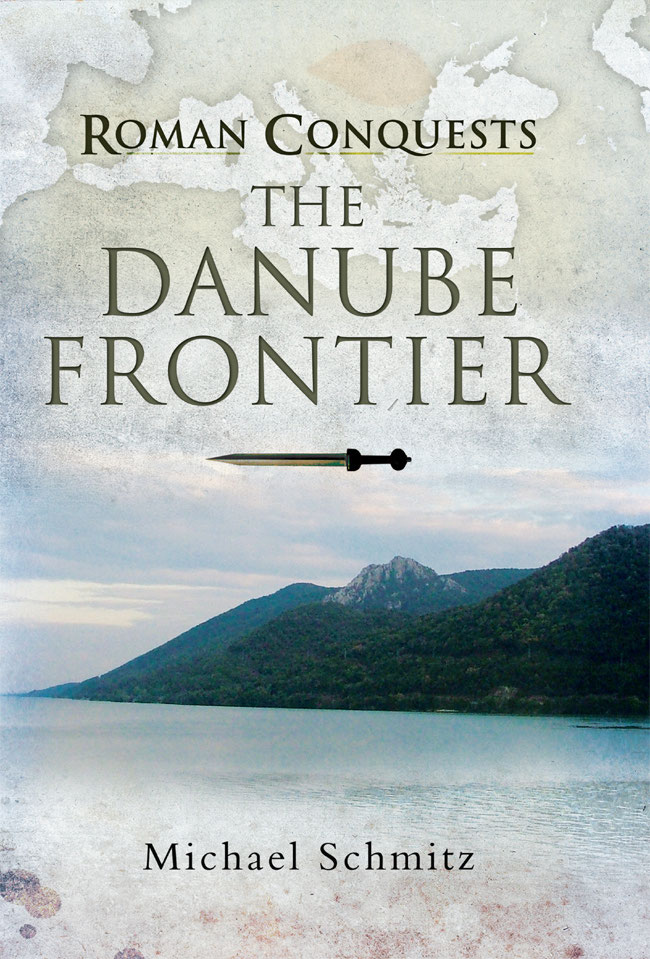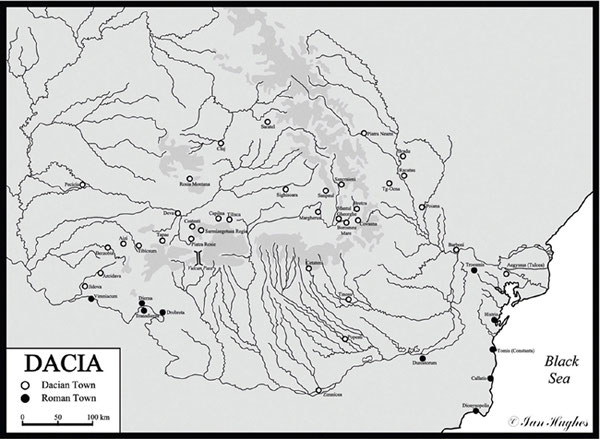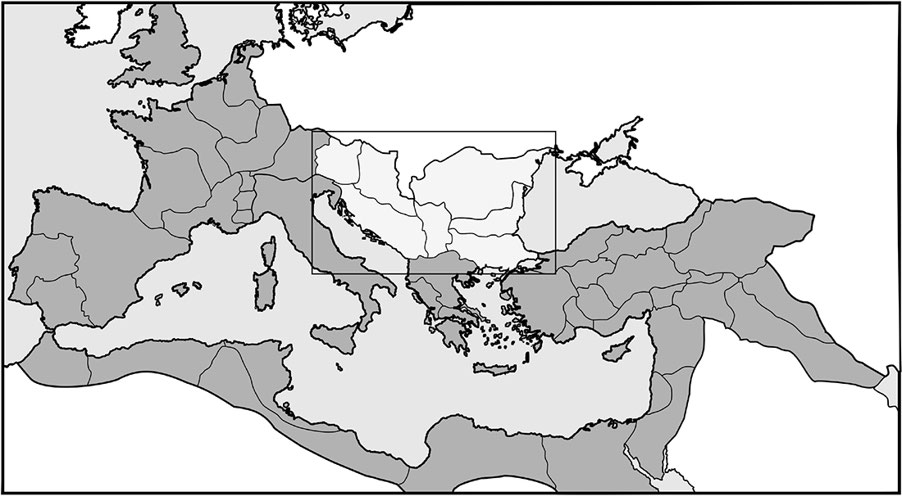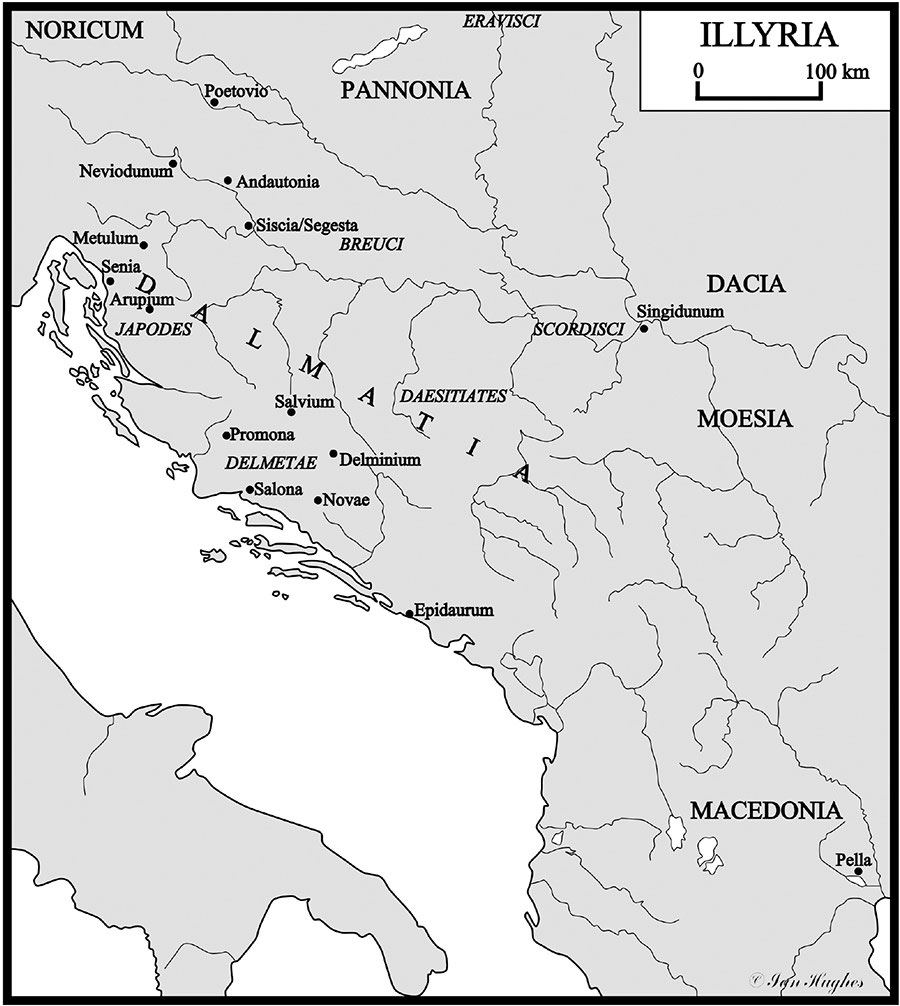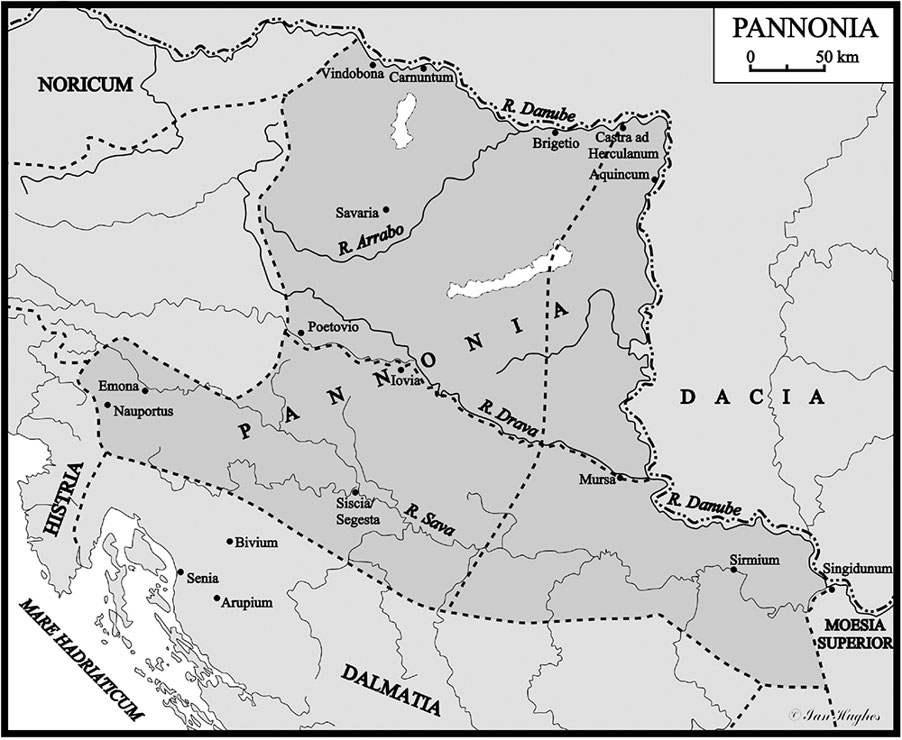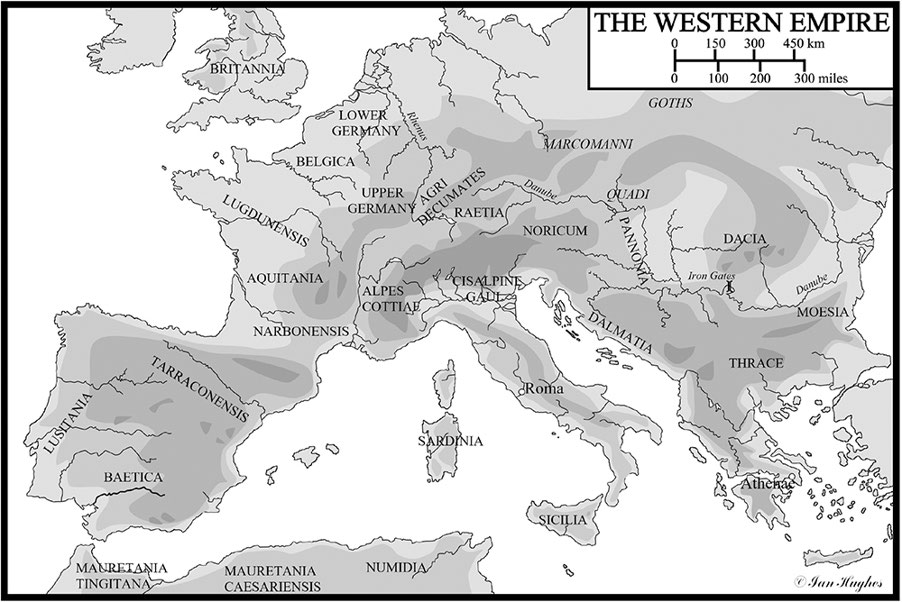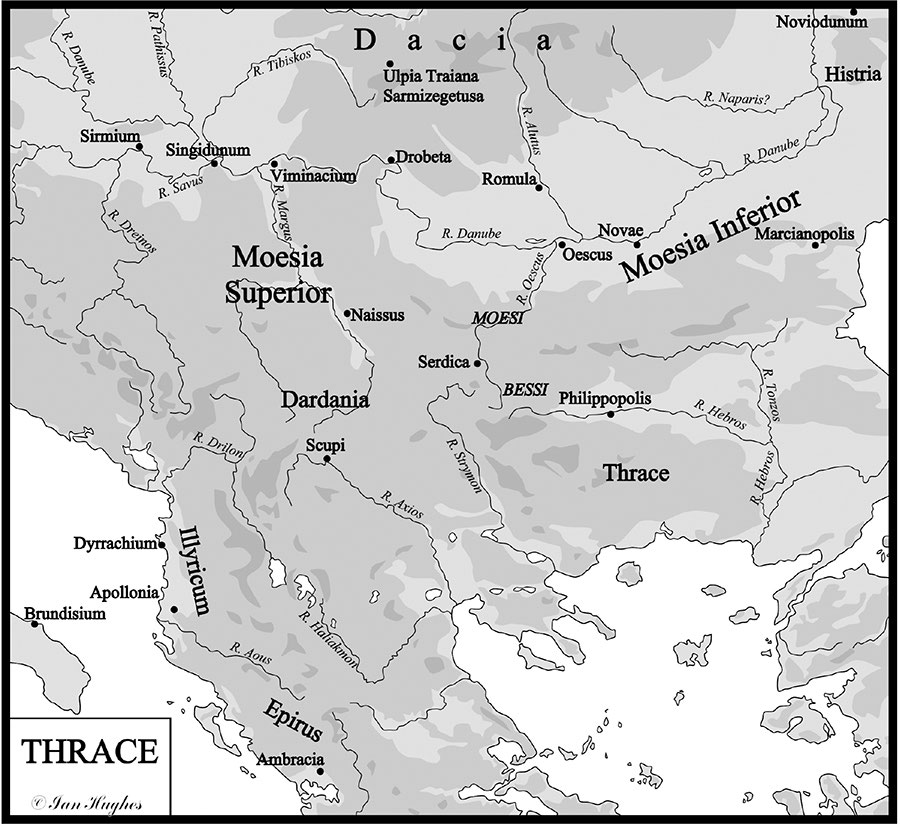Roman Conquests: The Danube Frontier
Roman Conquests: The Danube Frontier
Dr Michael Schmitz
First published in Great Britain in 2019 by
Pen & Sword Military
an imprint of
Pen & Sword Books Ltd
47 Church Street
Barnsley
South Yorkshire
S70 2AS
Copyright Michael Schmitz, 2019
ISBN 978 1 84884 824 5
eISBN 978 1 47386 556 3
Mobi ISBN 978 1 47386 555 6
The right of Michael Schmitz to be identified as Author of this work has been asserted by him in accordance with the Copyright, Designs and Patents Act 1988.
A CIP catalogue record for this book is available from the British Library.
All rights reserved. No part of this book may be reproduced or transmitted in any form or by any means, electronic or mechanical including photocopying, recording or by any information storage and retrieval system, without permission from the Publisher in writing.
Pen & Sword Books Ltd incorporates the Imprints of Pen & Sword Aviation, Pen & Sword Family History, Pen & Sword Maritime, Pen & Sword Military, Pen & Sword Discovery, Pen & Sword Politics, Pen & Sword Atlas, Pen & Sword Archaeology, Wharncliffe Local History, Wharncliffe True Crime, Wharncliffe Transport, Pen & Sword Select, Pen & Sword Military Classics, Leo Cooper, The Praetorian Press, Claymore Press, Remember When, Seaforth Publishing and Frontline Publishing.
For a complete list of Pen & Sword titles please contact
PEN & SWORD BOOKS LIMITED
47 Church Street, Barnsley, South Yorkshire, S70 2AS, England
E-mail: enquiries@pen-and-sword.co.uk
Website: www.pen-and-sword.co.uk
Dedication
Iwould like to dedicate this book to Bob Estrich. From the very beginning, when you took pity on a pair of poverty-stricken university students with a young baby and kept our computer running, to the end when you were helping us renovate our first house, a truer friend there hasnt been, I like to think this is the book you would have wanted me to write. A friend and lover of history lost too soon.
What have the Romans ever done for us?
Contents
List of Illustrations
1. A Thracian/Dacian sica. ( Authors photograph )
2. A tanged Dacian falx blade. ( Authors photograph )
3. A socketed Dacian falx blade. ( Authors photograph )
4. Reproduction Dacian falces and sica . ( Authors photograph )
5. Adamklissi Metope showing a Roman legionary wearing lorica squamata (scale armour), a manica and a cross-braced helmet. ( Authors photograph )
6. Adamklissi Metope XVIII showing a Roman legionary wearing lorica hamata (mail armour) and a manica . The Dacian appears to be wearing a helmet and carries a falx . ( Authors photograph )
7. Adamklissi Metope XX showing a Roman legionary wearing Lorica Hamata (mail armour) and a manica . The Dacian appears to be wearing a helmet and carries a falx. ( Authors photograph )
8. Dacian warrior wearing looted Roman lorica hamata (mail armour) wielding a falx ( Copyright Radu Oltean, Art Historia )
9. Sarmatian Horsemen riding into battle against the Romans, two of the horses are barded in scale armour as depicted on Trajans Column. ( Copyright Radu Oltean, Art Historia )
10. Roman Legionaries crossing the Danube on a makeshift pontoon bridge, on their way into Dacia. After the scene on Trajans Column. ( Copyright Radu Oltean, Art Historia )
11. Night battle between Romans and migratory Dacians taking place among the Dacian wagons. After a Metope on the Adamklissi Monument. ( Copyright Radu Oltean, Art Historia )
12. Trajans Column Scenes LXXVIII-LXXIX. Victory trophy illustrating Dacian weapons and armour. ( Authors photograph )
13. Trajans Column Scene XL The battle of the bandages. Injured Roman troops being treated after a battle with the Dacians. ( Authors photograph )
14. Trajans Column Scene CXLV, The Dacian king Decebalus committing suicide rather than being captured by the Romans. ( Authors photograph )
15. Trajans Column Scene LXVI Roman auxiliaries assaulting a Dacian fortress, two Dacians can be seen manning a Ballista on the fortress walls. ( Authors photograph )
16. Trajans Column Scenes CXIII-CXIV Roman forces arrayed outside the walls of a Dacian fortress, apparently made using Murus Gallicus. ( Authors photograph )
17. Remains of one of the outer defensive walls at Sarmizegetusa Regia, the Dacian capital. (Gradistea Muncelului, Hunedoara Country). ( Authors photograph )
Acknowledgements
Firstly, I would like to extend my most sincere thanks to Phil Sidnell, not only for the invitation to write this book but the patience he has shown the author through a very trying period. I would also like to thank my colleagues Professor Lynda Garland and Associate Professor Matthew Dillon, who have encouraged me throughout the process of writing, and Nigel Holman who selflessly gave up a number of relevant books. Finally, and most importantly, I would like to thank my partner Fiona, my sons Aidan and Cody and my daughter Isaboh for their support.
Introduction
The Danube frontier posed a continuous and serious threat to the Roman Empire from at least the time the first Roman general, Curio, reached the river in the 70s BC. This threat would last until the fall of the Empire more than five centuries later. It is clear that throughout this period the Romans had significant and frequent issues along this frontier and felt the need to conquer the people living along the Danube in order to maintain their own security and protect the important travel and communication links between the eastern and western parts of the Empire.
Roman conquests along this most volatile of frontiers occurred over a period of approximately 150 years and under the guidance of numerous emperors and generals, beginning with Octavian in 35 BC and ending with Trajans conquest of Dacia in AD 107. Dacia, the last great Roman imperial acquisition, was also the first province to be surrendered. At its greatest extent the Danubian frontier formed the northern boundary of Raetia, Noricum, Pannonia, Moesia and the southern boundary of Dacia. It was the setting for numerous battles, important victories and significant Roman losses, costing many thousands of lives over the period examined. After Rome had completed its conquests along the Danube, the river formed the longest continuous natural border in continental Europe. This frontier, which stretched over 2,800km, was more than twice the length of the other major natural border in continental Europe, the Rhine. The Danube was therefore a justifiably important focus of Roman attention.



